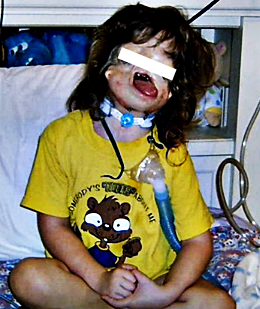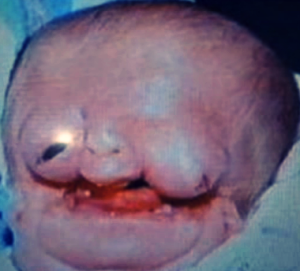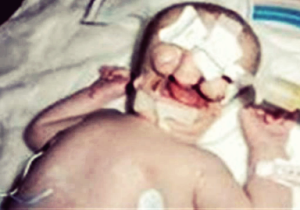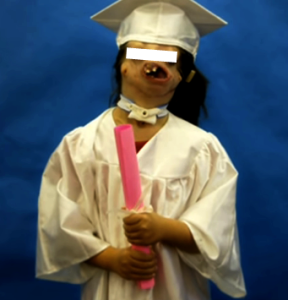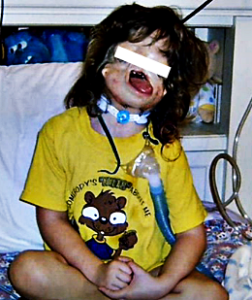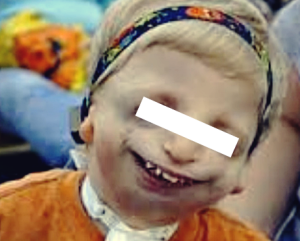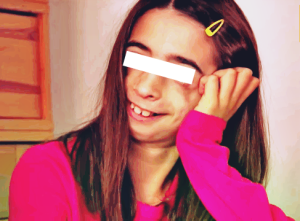Treacher Collins syndrome is a rare genetic congenital condition that causes abnormal growth of facial tissues and bones. It tends to run in families and gets passed with an autosomal dominant inheritance pattern.
Symptoms of Treacher Collins syndrome
The signs and symptoms of Treacher Collins syndrome tend to differ greatly as per the severity of the disorder. Some patients may suffer from minor facial defects which are often not easily visible, while severe defects may be visible in others.
Listed below are a few symptoms of Treacher Collins syndrome:
- Presence of malformed or underdeveloped facial bones. Deformity or underdevelopment of the check bones is particularly evident.
- Irregularly shaped skull. The bi-temporal area may feature anomalous tapering.
- The jaw and chin size in patients tend to be comparatively smaller than healthy people.
- Cleft palate, i.e., a hole in mouth roof, may be present in some Treacher Collins syndrome patients. This deformity can contribute to feeding issues as well as deficits in nutrition which can then result in stunted or inhibited growth and development. A cleft palate may also trigger other conditions like middle ear infections, etc.
- Different kinds of dental defects may be present. Patients may exhibit tooth enamel abnormalities, tooth agenesis, and irregularly arranged/formed teeth.
- The eyes tend to elicit unique and unusual characteristics like downward slanting eyes; coloboma or a dent mark in the lower eyelids; and thin and very few eyelashes. Some affected individuals may suffer from other forms of ocular problems which may be marked by vision disturbances and/or blindness.
- People with Treacher Collins syndrome may have tiny throat, nose, mouth, and airways. This may cause problems in both feeding as well as easy breathing. Parents have to keep checking for breathing or respiratory issues in affected toddlers.
- Feeding problems may pose issues in sufficient nutrition intake by affected infants which can then result in weight loss.
- Abnormal development of facial bones and severe airway obstruction in Treacher Collins syndrome patients can sometimes result in extreme breathing problems as well as fatalities. In most of these cases, surgeries may be carried out to ease the hindrances to proper feeding and respiration.
- Ear may be defectively formed, tiny, or even undeveloped. About 50 percent of patients with middle ear deformities may eventually suffer from hearing loss.
- Hearing problems may prevent children with Treacher Collins syndrome from learning and understanding the right pronunciation of words. This can then lead to impaired or delayed language and speech development. Use of sign language for proper communication is not the only answer to such hearing deficits. Patients may undergo speech and physical therapy to overcome the problems posed by ear issues and thus improve speech and language development.
- There may be loss of hearing in both ears. This is not equivalent to deafness. Middle ear abnormalities can however pose problems in correct identification of human voices and sounds at varied pitch levels. Use of hearing aids can help alleviate hearing issues.
- There are no intelligence deficits in both adult and young patients of Treacher Collins syndrome.
- Presence of morbid and ugly facial features may cause low self-esteem and prevent the full growth of varied types of human relationships. Parents may provide all the available treatment options to correct the deformities as well as seek counselling for both the affected child and themselves to avoid emotional and psychological issues.
Treacher Collins Syndrome – Juliana Wetmore Pictures
Juliana Wetmore is a shining example of winning against all odds. Known as the ‘the girl born without a face’ in 2005, she has had more than 45 surgeries, as there more than 40 percent of bones were missing in her face. She now studies in an elementary school and is known to be a bright, intelligent kid.
Causes of Treacher Collins syndrome
Treacher Collins syndrome is a genetic disease caused due to errors or mutations in the TCOF1 gene. This gene performs the function of sending instructions instrumental in release of the treacle protein. The functions of this protein are currently unknown. Scientists are however aware that the protein has an important role during the fetal facial bones development process.
Errors, changes, and mutations in TCOF1 gene trigger lowered production of treacle protein. This causes the passage of anomalous instructions to the facial bones in the fetus to damage itself. Such self-inflicted harm is what results in the development of abnormal tissue and facial bones in Treacher Collins syndrome patients.
Treacher Collins syndrome is inherited and passes down through generations. The disorder can occur with the passage of just a single copy of the defective or mutated gene, from the father’s side or the mother’s side. It is possible for a fetus to develop new gene mutations without it being passed down from its parents.
Treatment
There is no cure for Treacher Collins syndrome. Treatment is focused on alleviation of symptoms and prevention of complications.
A few treatment options are listed below:
- Tracheostomy to correct blocked airways.
- Tube feeding to overcome feeding issues.
- Surgical correction of cleft palate and other severe deformities.
- Dental reconstruction of dental defects.
Treacher Collins Syndrome – Life Expectancy
Life expectancy of Treacher Collins syndrome patients is the same as that of a normal person. It is not a fatal or life-threatening ailment, but associated respiratory problems may become serious. Proper therapies and treatment ensures that patients can live a long and normal life.
Treacher Collins Syndrome – Pictures
